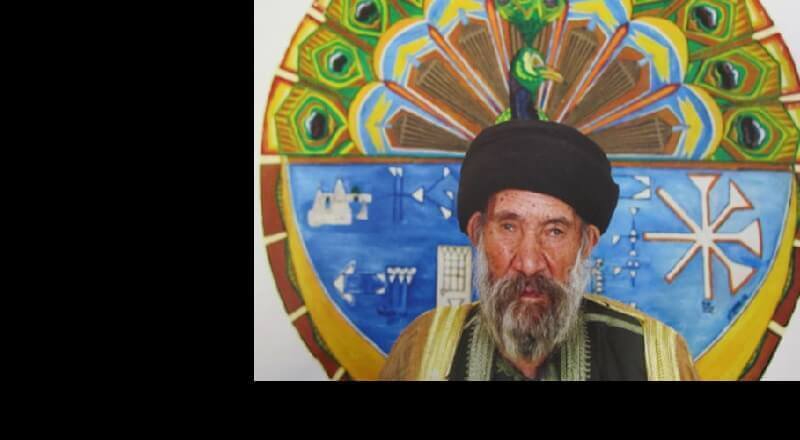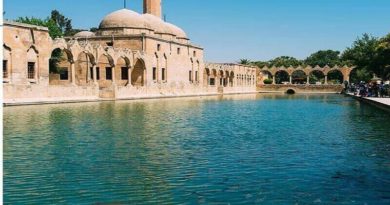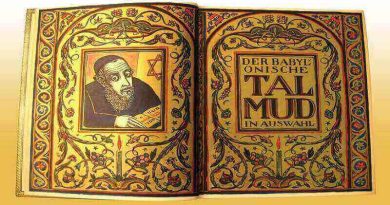What is Yezidism?
What is Yezidism – Where, How and When Was It Founded?
Yezidism is an eclectic belief that some Kurds, who gathered around the lodge founded by Sheikh Adi bin Musafir in the 12th century, gradually moved away from Islam after the death of Sheikh Adi bin Musafir and were influenced by the Christian, Jewish, Mithra and Zoroastrian beliefs living in the surrounding geography. Members of this belief define themselves as Ezidis, and the surrounding peoples as Yazidis.
When was Yazidism established?
Records of Yezidism have not been found in historical documents dating back to the 12th century. For this reason, it can be said that Yezidism was founded after Sheikh Adi, as claimed.
-What is the relation of Yezidism with Yazid bin Muaviye?
Sheikh Adi b. Musafir is recorded in the historical records as a Sunni scholar. What distinguishes Sheikh Adi from other Sunni scholars is that he uses praiseworthy words about Yazid bin Muaviye in his works. From the time of Sheikh Hasan bin Adi (1195-1246), who was one of the notables of the Adevi sect, the Adevi sect began to harbor extreme ideas about Yazid bin Muaviye, Sheikh Adi bin Musafir and Satan. In other words, although the source of Yezidism is tried to be denied, it is Yazid bin Muaviye.
-How was the creation of man according to Yezidism?
In Yezidism, Allah (cc) first created Adam and then Eve from his ribs. Adam and Eve began arguing about which was more important in childbearing. Then Adam put his essence in an earring and Eve put his essence in an earring. 40 days later, when they opened the jars, a bug came out of Eve’s cube and a beautiful child came out of Adam’s. This boy later married a houri from Heaven. Yezidis are descended from these two.
-How do Yazidis view other religions?
Yezidis believe in other religions and their prophets. However, as we mentioned above, since they see themselves differently, your religion is dominated by us, and our religion is dominated by us. The Yezidis do not have the institution of prophecy, but they have shrines and the Angelic Peacock (Satan) blessing. They attach great importance to the shrines of the clergy. Every year in April, they visit Sheikh Adi’s Tomb and become pilgrims and celebrate.
-What are the holy books of Yezidism?
Yezidi holy books are ‘Mushefa Resh’ (Black Book) and ‘Kitab-ı Cilve’. However, Yezidis say that the printed books in the market do not comply with their beliefs. In addition, in Yezidism, there is an oral transmission rather than a book.
Why is Satan sacred in Yezidism?
When Allah (cc) created Adam, he ordered the angels and Satan to prostrate to Adam, but Satan, the Melek-i Tavus, told Allah; He refused to prostrate to Adam, saying, “There is only you worthy of worship.” Because of this monotheistic stance, Yazidis bless Satan.
– What is worship like in Yezidism?
Yezidis worship in two ways, verbal and de facto. They say their prayers in Kurdish. Lalesh is a sacred place for Yezidis.
While they pray by turning their faces to the Sun in the morning and evening, they turn their faces to Laleş and pray at noon.
They also fast at certain times of the year. They also go to Laleş and perform their pilgrimage at least once in their lifetime. Those who cannot find the opportunity to do so, bless the Melek-i Tavus statue carried by the traveling clergy called Kavval.
– What is the class structure in Yezidism?
Yazidi society has a strict caste system similar to that in India. These classes are Sheikhs, Pirs and Disciples. Of these, Sheikh and Pirs are the ruling class and every year the disciples have zakat to give them.
Although there is no transition between classes, it is forbidden to marry an outsider in the Yezidi society. Yezidism is founded on blood ties. A person who is not born to a Yazidi mother and father cannot be a Yazidi.
– Why do Yazidis not use the word Satan?
Since the word satan is attributed with bad meanings in the religions of Islam, Christianity and Judaism, Yezidis do not like the use of this word. That’s why they call him Melek-i Tavus.
– What are the Yezid religious holidays?
In Yezidism, the majority of the year is filled with holidays, special days and special visits. New Year’s Eve is the biggest and most important Yazidi holiday. It is known as Çarşema Sor. The first Wednesday of April is considered New Year’s Eve. Yezid Feast, Bêlında Feast: The first Friday of Çılê Zıvıstane (Winter Forty) is celebrated only as the festival of Pirafat Pirs, and the second Friday as a general holiday. Hıdır İlyas Day: It is celebrated on the first Thursday of February. Apart from these, there are many holidays such as Eid-al-Adha, Ramadan Feast, and Jesus Feast.
Many Yezidi ceremonies are held in Laleş. Before entering Laleş, all visitors take off their shoes and enter Laleş barefoot, starting from the place called the Sirat Bridge. They definitely visit places such as Sheikh Adi’s tomb, Sheikh Fahr’s tomb, Sheikh Shams tomb and Kaniya Spi (White spring) in Laleş. The water of Kaniya Spi is drunk and baptized.
The peacock statue is the symbol of Yezidism and the flag of the Yezidis, and these statues are circulated in Yezidi regions at certain times. Now Anzel (Şeyhan) and Şengal (Sinjar) Peacocks are circulated.
– Is there a relationship between Yezidism and Zoroastrianism?
Those within the nationalist Kurdish movement adopt Zoroastrianism as the national religion and claim that Zoroastrianism is the ancient religion of the Kurds, and Yezidism is a continuation of Zoroastrianism in order to keep the spirit of nationalism alive.
First of all, we need to emphasize that these claims are unfounded. That is, Zoroaster placed monotheistic belief in an environment where the Sun cult belief existed. However, in Yezidism, Melek-i Taus (Satan) comes to the fore more than God and is blessed. The fact that Yezidis turn to the Sun and worship shows that it is a continuation of Mithra belief, not Zoroastrianism. Although it is not exactly the same, we can say that it was strongly influenced by Mithraism.
In addition, many Yezidi intellectuals accept that Yezidism is not a continuation of Zoroastrianism. A Yazidi intellectual, Dr. Xelil Cindi; In Yezidi literature, that there are many narratives about Adam, Noah, Abraham, Moses, Daniel, Jesus, Zechariah, and Muhammad, there are no narratives about the names Zoroaster, Mani and Mazdek, they are not known by Yezidis, and despite the existence of the gods of good and evil (dualism) in Zoroastrianism, good and evil are the only God. He rejects this idea based on many points, such as the fact that Zoroastrians do not bury their dead but leave them to predators in towers of silence while Yezidis bury their dead, that Zoroastrianism does not exist in Yazidis, that Zoroastrianism forbids sacrifice despite the widespread understanding of sacrifice in Yezidism.
In addition to these, animals such as scorpions, snakes and cats are considered unclean by Zoroastrians, but they are sacred to Yezidis. While starvation or fasting is not tolerated in Zoroastrianism, fasting has a very important place in Yazidis. While smoking is prohibited in Zoroastrianism, smoking plays an important role in Yezidism and tobacco has its owner (Goddess).
–What do Yazidis not eat?
Yezidis do not eat lettuce. In addition, it is claimed that they do not eat roosters, fish, broad beans, venison, sheep and beans.
– What is the population of Yezidis in the world?
According to the claims of Yezidi sources, around 750 thousand Yazidis live in the world. Although they lived intensively in the East and Southeast of Turkey during the Ottoman period, their population decreased gradually after the Republic and their number is expressed in thousands in Turkey today.
By Orhan HARİSOĞLU




